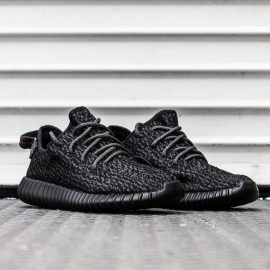

This article is an excerpt from the Shortform book guide to "Contagious" by Jonah Berger. Shortform has the world's best summaries and analyses of books you should be reading.
Like this article? Sign up for a free trial here .
What is scarcity marketing? Why does the fear of missing out make people want to buy a product?
Scarcity marketing is based on the idea that people generally want what they can’t have. If you can make your product seem scarce or difficult to acquire, customers will be more likely to want it. In this way, scarcity marketing can be a great way to increase demand for a product.
Keep reading to find out how to use scarcity marketing the right way.
What Is Scarcity Marketing?
You can use scarcity and exclusivity to make your product or service desirable.
“Scarcity” is all about controlling the perception of your product’s availability. It involves making people think that they’ll struggle to get hold of whatever you’re selling. You can do this by:
- Limiting how many units of the product you actually make and publicizing these limits
- Telling customers that the product is expected to sell out quickly
- Adding time restrictions on when people can access the product or service—for instance, only open your business during certain times of the day, or only make a product available for a short time
The idea of “exclusivity” also relates to availability, but in a slightly different way. It’s about creating the perception that only a select few people have access to your product or service. A simple way of doing this is to make the product or service more expensive. That way, only richer people can afford it.
However, a much more effective method of generating exclusivity is making information about and access to your product hard to come by. For example, you could make your product or service “members only,” or only let people access it if they’ve been recommended by a current member.
Another option is to not traditionally promote your product or service that much. This will limit the amount of public information about it and make it seem like a “secret.” Knowledge of this secret product or service will then become something “exclusive.” (However, it probably won’t remain secret for long. Humans are notoriously bad at keeping secrets.)
Note that you don’t want to make the existence of your product or idea completely secret. You won’t generate word of mouth if absolutely nobody knows about the thing you’re offering. You merely want to present the illusion of secrecy—something you can do by limiting the amount of public information about it, not releasing no information whatsoever.
Both of these suggestions may seem counterintuitive compared to the usual marketing advice of making your business as visible as possible. However, they can have a powerful effect when trying to generate word of mouth due to the benefits of scarcity.
The Benefits of Scarcity Marketing
Using scarcity marketing will benefit you in two ways. First, it will make customers want to purchase your product or service and do so right now. Consumers tend to believe that if a product or service is hard to get hold of, it must be good and therefore worth buying. After all, there must be a reason why it’s constantly sold out. Perhaps it’s unique, or particularly high-quality. They decide that they must purchase this popular product or service as soon as possible so they don’t miss out when it inevitably sells out again.
Second, making a product or service scarce gives social currency to the people who do manage to get hold of it. It makes them seem like “insiders,” special individuals who were somehow able to access something that’s out of reach to a lot of people. These people know their “insider” status will make them look good, so they brag about it to their loved ones. Their loved ones may then decide they want the “insider status” that comes with using the product or service, too. They’ll be driven to buy it and will inevitably brag to others about doing so. This continues the cycle of social currency and word of mouth.
(Shortform note: To learn more about how the principle of scarcity influences your customers’ buying decisions, read our summary of Robert Cialdini’s Influence.)
Example: SmartBargains and Rue La La
SmartBargains was a website that sold discounted designer items such as clothes and homeware. At first, it saw a lot of success. However, by 2007, it was struggling. People weren’t as excited about the brand anymore and it was losing customers.
In 2008, SmartBargains’ CEO decided to set up a new website called Rue La La. Rue La La sold exactly the same products as SmartBargains. However, its mode of operation was slightly different. The goods were sold during “flash sales” that only lasted for a day or two. This created an impression of scarcity. To access the sales, customers had to be invited by an existing user of the site. This generated a sense of exclusivity.
Rue La La became extremely successful because of this approach. Gaining access to its products became a form of social currency. This meant that its members bragged about their use of the site, spreading the word about it to their friends and family and increasing the site’s customer base. As such, this is a great example of successful scarcity marketing.

———End of Preview———
Like what you just read? Read the rest of the world's best book summary and analysis of Jonah Berger's "Contagious" at Shortform .
Here's what you'll find in our full Contagious summary :
- Why some new products and ideas gain widespread popularity while others fail
- The six principles to making your product or idea contagious
- The importance of word of mouth in marketing






